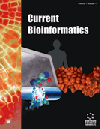- Home
- A-Z Publications
- Current Bioinformatics
- Previous Issues
- Volume 9, Issue 4, 2014
Current Bioinformatics - Volume 9, Issue 4, 2014
Volume 9, Issue 4, 2014
-
-
Data Mining of Docking Results. Application to 3-Dehydroquinate Dehydratase
More LessAuthors: Mauricio Boff de Avila and Walter Filgueira de Azevedo Jr.In this article, we describe a computational methodology that analyzes the results generated in ligand docking and evaluates the correlation between simulation results and intrinsic characteristics present in the crystallographic structures used in the simulation, such as thermal parameter, resolution, and overall quality of the X-ray diffraction data. We focus our analysis on molecular docking data obtained from a Read More
-
-
-
Optimal Control for Gene Regulatory Networks Based on Controlled Semi-Markov Process
More LessBy Qiuli LiuA major objective for constructing gene regulatory networks is to use them as models for designing optimal therapeutic intervention policies within the context of synchronous or asynchronous probabilistic Boolean networks (PBNs). However, most of the previous works focused on the former and only few studied the latter. This paper deals with an optimal control problem in a generalized asynchronous PBN by applying the the Read More
-
-
-
Prediction of Eukaryotic Exons via the Singularity Detection Algorithm
More LessAuthors: Jiaxiang Zhao, Xiaolei Zhang and Wei XuThe prediction of eukaryotic exons is an important topic in bioinformatics. In this paper, a model-independent method based on the singularity detection (SD) algorithm and the three-base periodicity has been developed for predicting exons in DNA sequences of eukaryotes. Using the HMR195 data set, BG570 data set and 200 test data as test sets, we show that, (1) In comparison with the exon prediction by nucleotide Read More
-
-
-
A Multi-Template Combination Algorithm for Protein Model Refinement
More LessAuthors: Juan Li, Zipeng Liu and Huisheng FangAs the gap grows tremendously between the numbers of protein sequence and structure, in-silico protein structure prediction plays more and more critical roles in life science. Biennial experiments of Critical Assessment of protein Structure Prediction (CASP), the most authoritative in the field of protein structure prediction, shows that most prediction methods of today are successful in certain aspects, such as comparative modeli Read More
-
-
-
Fractal Analysis of the Bone Marrow in Myelodysplastic Syndromes
More LessAuthors: Giorgio Bianciardi and Pietro LuziBasic researchers and clinicians are increasingly aware of the remarkable importance of the fractal approaches in the morphological study of cells and tissues, providing information that can help to understand pathological changes. In our experience, fractal analysis has been able to produce important data on the differential diagnosis in the patient. Here we report new data on the fractal analysis of the bone marrow in myelo Read More
-
-
-
Identification of Protein Family Representatives
More LessAuthors: Andrzej Kasperski and Renata KasperskaSimilarity analysis of sequences belonging to some protein families indicates the existence of highly variable positions. In this work, a method of interpretation of variability at these positions is presented. The proposed method extends out of the Dot-Matrix method with the possibility of making new analysis of similarity and consideration of physicochemical aspects of variability. These analyses have been made at two co Read More
-
-
-
Centrality Measures in Biological Networks
More LessAuthors: Mahdieh Ghasemi, Hossein Seidkhani, Faezeh Tamimi, Maseud Rahgozar and Ali Masoudi-NejadMany complex systems such as biological and social systems can be modeled using graph structures called biological networks and social networks. Instead of studying separately each of the elements composing such complex systems, it is easier to study the networks representing the interactions between the elements of these systems. A commonly known fact in biological and social networks’ analysis is that in most n Read More
-
-
-
GPCRTOP: A Novel G Protein-Coupled Receptor Topology Prediction Method Based on Hidden Markov Model Approach Using Viterbi Algorithm
More LessAuthors: Babak Sokouti, Farshad Rezvan, Guy Yachdav and Siavoush DastmalchiKnowledge about the topology of G protein-coupled receptors (GPCRs) can be very useful in predicting diverse range of properties about these proteins, such as function, three dimensional structure, and ligand binding site. Considering that only few GPCRs have known structures, many computational efforts have been carried out to develop methods for predicting their topology. A novel method to predict the location an Read More
-
Volumes & issues
-
Volume 20 (2025)
-
Volume 19 (2024)
-
Volume 18 (2023)
-
Volume 17 (2022)
-
Volume 16 (2021)
-
Volume 15 (2020)
-
Volume 14 (2019)
-
Volume 13 (2018)
-
Volume 12 (2017)
-
Volume 11 (2016)
-
Volume 10 (2015)
-
Volume 9 (2014)
-
Volume 8 (2013)
-
Volume 7 (2012)
-
Volume 6 (2011)
-
Volume 5 (2010)
-
Volume 4 (2009)
-
Volume 3 (2008)
-
Volume 2 (2007)
-
Volume 1 (2006)
Most Read This Month
Article
content/journals/cbio
Journal
10
5
false
en


